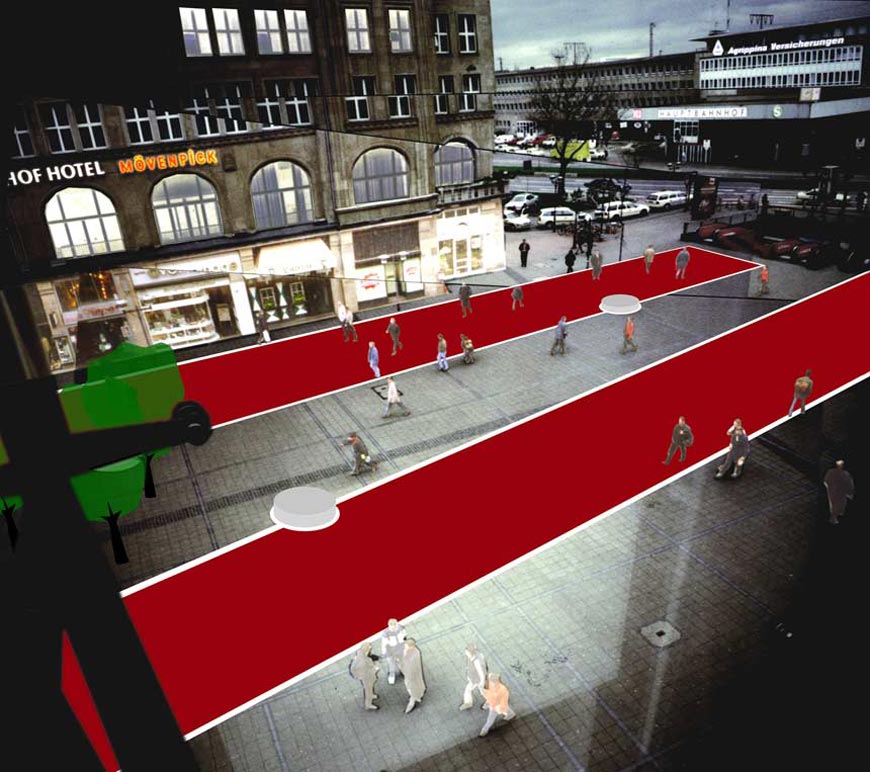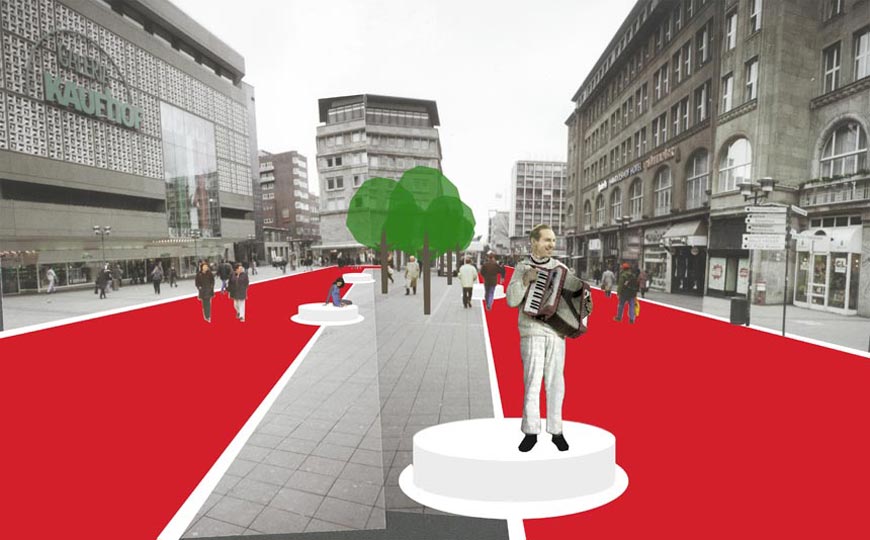Stars und Sternchen (Big Stars, Little Stars) - 2000
Project for Willy-Brandt-Platz, open competition organized by the City of Essen
with Thomas Stadler, architect
The concept for this work was based on the function of Willy-Brandt-Platz as a foyer, a transit zone, and as the city’s calling card. Visitors are given a fitting reception, those hurrying through are offered a dignified walk, and everyone is made to feel like a central character in the city’s play. The two main elements of the project are a red strip (probably marked out with fixed red plastic granulate) – The Red Carpet – and white cylindrical elements (probably painted metal) – The Podiums. The Red Carpet focuses movement in the square by highlighting its three main directions and connecting them into a continuous path. This strip plays an important role in terms of urban planning: the outline of The Red Carpet gives the jumbled ensemble of buildings a distinctive frame and turns the place into a square in the true sense. In the evening, the Carpet’s outline is traced by a white illuminated strip. The Red Carpet refines and heightens the character of Willy-Brandt-Platz as a transit zone. Underscoring the main lines of movement across the square celebrates the motion of both the townspeople and of visitors; hurrying becomes mindful walking, perhaps even strolling. Associations with the red carpets usually rolled out for VIPs but not for ordinary citizens further underline the main idea of the project: at this key location in Essen, the city’s protagonists – its inhabitants and their visitors – are the stars.
The podiums are the city’s stages. The simple design permits many associations and functions. Their height invites people to take a seat, to rest a while, to see and be seen. They can also be used as stages, open to all. In the evening, the lower ring is lit up, joining with the illuminated outline of the Red Carpet to give the sense of a big occasion. The way the city of Essen presents itself is up to the people who move actively through this space. They represent the city directly, without the need to refer to specific achievements. The focus is on mindful movement within the city produced by residents and visitors. The city’s calling card is not individual historical events but the omnipresent movement of the people living there, making history themselves.






































































































